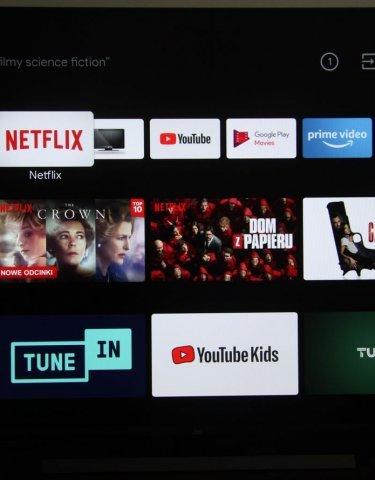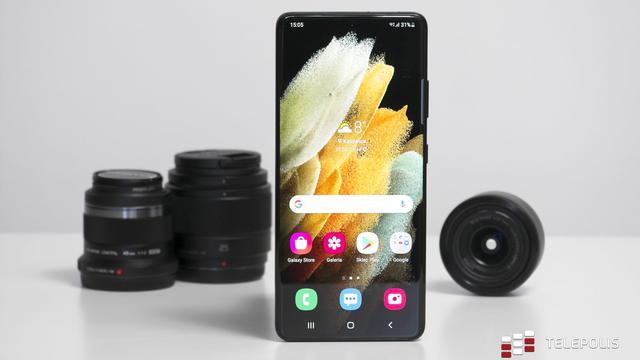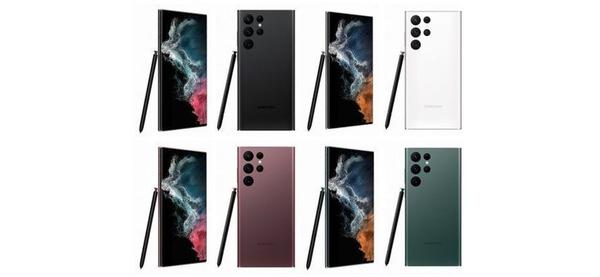In the last few months, I had the opportunity to interact with several different TV models, both from the higher and lower price range and from different manufacturers. And it was these experiences that prompted me to summarize what the smart TV systems installed on them can do. In recent years, the TV set has ceased to be just a screen for displaying images from terrestrial/satellite television. Now we use it much more often to watch VOD services, play games or even listen to music. This is possible thanks to "smart TV" systems, which can be better and worse.
This will interest you Connecting the phone to the TV is not difficult. We suggest how to do itTwilight of illegal television on the Internet? Over PLN 1 million in compensation for piracyInitially, virtually every major manufacturer used its own solutions, which in most cases were average at best. The biggest problem is the lack of applications, especially those typical for local markets. As the example of Microsoft on the smartphone market showed, your product will not sell without an application. Therefore, after these few years, only 3 systems matter now - webOS from LG, Tizen from Samsung and Android TV from Google. The first two companies won because they have large sales and it is profitable for them to invest in the development of applications for their platforms, and the last one is based on a huge number of applications that are relatively easy to adapt to TV sets. However, man does not live by applications alone, so how is it with this smart TV?
LG webOS - pleasing to the eye, but...
I've been using an LG TV equipped with webOS 5.0 for half a year, to which I switched from Android TV. As it usually happens after switching to a new solution, I was a bit lost at first, but I quickly got used to it. The problems started when I started looking for solutions that I used on my old TV. Of course, there is no shortage of applications, there is Netflix, YouTube, Amazon Prime or even Polish Player and iPla and Apple TV, which is missing on Android. The problem arises when you want to play movies from a network drive. On Android TV there is, among others, Kodi, which is a great combine, which is enough to give the path to the appropriate folder and we can already view holiday photos on TV.
See also: what is the best TV for PLN 2,500 in size 55-65 inches?
It's not that simple in webOS, because there are no applications with such functionality, but there is built-in DLNA support. This saves the situation somewhat, although it requires us to install a media server, either on a PC or on a NAS, and serve multimedia through it. I recommend the free and quite nice server Serviio, which has everything you need to manage your library. Other things that annoy me a bit about webOS are that many options are buried deep in the menu and the fact that the menu itself only takes up half of the screen, the rest is wasted making it a bit difficult to navigate. And this futile voice assistant, which not only has a problem with recognizing the Polish language, but also with the fluency of its operation. I hope LG decides to replace it with the Google assistant in the future.
Read more belowThe bottom bar with applications is a matter of taste, in fact, you can get used to it, so I won't complain about it. However, the operation of the LG Web Store and some applications breaks me down. I may not have a top model, but quite a high one (LG OLED55B9), which scores a lot of "knockouts" when browsing the content of the store or updating the application. The first version of Apple TV also worked very poorly, only the next one significantly improved fluency. Fortunately, I have not observed such problems with other applications such as Netflix or Player, but according to numerous opinions on forums, traumatic experiences with Android TV 5.0 should not come back to me, and I could not completely free myself from them.

An integral part of communing with webOS is also the remote control, in my case the Magic Remote, which lies very well in the hand and can be operated with one hand without any problems. The concept of controlling the cursor on the screen using the gyroscope built into the remote control is quite good, although I had to convince myself of it for a long time. Despite everything, I would put this pilot in 2nd place in my personal ranking. We'll talk about the first one in a moment.
Samsung Tizen - same shortcomings, but smoother operation
Samsung is a leader in TV sales in many markets, including Poland, and it is not without reason. For years, it has also been serving its own solution - the Tizen system, which it also developed with smartphones and watches in mind. On TV, this solution works quite well. It is functionally very similar to webOS, also everything is based on the bottom bar, which gives us access to applications and signal sources, leaving 2/3 of the screen unused. Just like the Korean competition, there are also applications, including local ones, because porting them from Android to Tizen is not a complicated process. However, there is still nothing like Kodi here, so like webOS we are forced to set up our own DLNA server.
So basically we have the same downsides here, but one big upside, and that is that I feel that Tizen runs much smoother. It is true that I dealt with it in a fairly high model (UE55Q80T), but I have no doubt that both the application store, multimedia support or the applications themselves, such as Apple TV, worked better than on the LG TV. I do not know how it is in cheaper models with worse processors, so I would not like to be so radical in my assessment.
See also: what is the best TV for PLN 3,500 in size 55-70 inches?
Tizen has one more flaw, its menu to control individual settings is very limited. In fact, Samsung does everything in its own way, provides ready-made image modes that for most of us may seem too intense and not very pleasant. It is true that there is also a Filmmaker Mode, which slightly reduces artificial image processing, but it is not available in all models. Adjusting the image to your own preferences is not easy and I would consider it a big minus.
The advantage is the remote control included with virtually all Samsung TVs. It is small, even children's hands can easily handle it, it has only a few buttons, but it still allows you to conveniently operate all the functions of the TV. For me, it's a model of ergonomics and I think that Android TV manufacturers should start taking an example from Samsung. What's more, Tizen allows you to configure the remote control in a fabulously simple way so that it also supports our satellite / cable TV set-top box or external audio / soundbar system. This is a great convenience and in most cases allows you to leave only one remote control to operate the TV, without having to buy a universal remote control. LG theoretically also has this option, but I couldn't get the remote to work with my NC+ decoder, it worked on Samsung the first time.
Android TV - finally stable
Android TV doesn't have the best reputation. All thanks to old TV sets that used this system in versions 5.o or lower. I myself still have a Philips, probably from 2016, which must have a hard reset every six months to work somehow. Otherwise, errors, restarts or application stoppages are the order of the day. But that's a song of the past. Today, Android TV is based on the 9.0 (Pie) system and is a much more stable and extensive platform. First of all, it uses all available space on the screen, which is much more convenient in navigating and selecting individual applications. Secondly, it gives access to over 4,000 different applications, from VOD services to games, which clearly wins over webOS or Tizen, although it lacks ... Apple TV. However, that may also change soon.
What annoys me about it? First of all, the separation of multimedia support from the basic functions on the TV. Android TV is a kind of overlay for some more low-level system, which looks different depending on the TV manufacturer. For some models, it is simply ugly and unsuitable for TVs in 2020. In this regard, both webOS and Tizen are much better. It looks best in the case of Philips, which not only has a fairly modern interface, but also the most extensive in terms of additional options. And I realize that it will not be important for everyone, but when dealing with various platforms, it is difficult not to notice such shortcomings.
Another affliction of models with Android TV on board is the remote control, I don't know why but each of them has an old-style "half a meter" remote control that is difficult to use with one hand. I think it's time for other manufacturers to follow the example of Korean giants and rethink their design. The more so that Android TV supports the Google assistant, which works very efficiently and can be used using the microphone built into the remote control, thus supporting most of the necessary options. In addition, there is also native support for Chromecast, which makes it easy to cast an image from a smartphone or tablet to the TV screen.
Which one is the best?
Summarizing these quite lengthy considerations, I would prefer a TV with Android TV capabilities with a remote control from Samsung and an OLED panel from LG. Unfortunately, no one on the market offers such a list at the moment. However, there is a solution for this, because you can always buy an additional box with the Google system and enrich its functionality with the missing elements. Only this solution also has its drawbacks - an additional remote control and a busy HDMI port. However, this also shows that the choice of a smart TV system should not be a key factor when choosing a new TV. It is worth paying more attention to many other features that are related to image quality. But we'll talk about that another time.
What's your opinion? I am waiting for comments and observations from other smart TV platforms.


